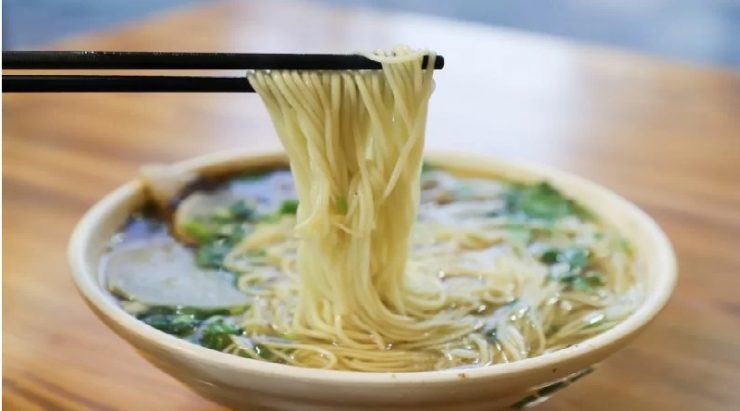THIS JAPANESE food has become one of the popular dishes in Indonesia. What was the origin like? Ramen has its roots in noodle dishes originating from China which later spread in Japan and blends into the local food culture.
Quoted from the raumen.co.jp page, the opening of a port in Japan in 1859 gave access to influences from China and Western countries, including in terms of food. The construction of the port was also accompanied by the abolition of the prohibition on eating meat which lasted almost 1,200 years.
China Town that emerged in Japan is filled with Chinese restaurants serving noodle dishes, the forerunner of Japanese ramen. Initially, Chinese food was deemed too expensive for ordinary people. However, Chinese food is becoming very popular in Japan.
Quoted from information at the Ramen Shin-Yokohama Museum, Japan, Chinese traders already have experience doing business with Westerners, they have had ports earlier than Japan. Westerners bring Chinese translators with them when they visit Japan. Some of the translators are traders and cooks.
What kind of ramen was made the earliest in Japan?
It is said that the first ramen in Japan was Nankinsoba in Hakodate. Actually, this is a dish of Chinese noodles, although it is not clear whether the food can be called ramen as it is today.
The port in Hakodate opened in 1859. At that time there was an advertisement for nankinsoba that was published in the Hakodate Shimbun on April 28, 1884. The restaurant was called Yowaken, a Western-style restaurant. Yowaken also introduced Nankin dishes.
At that time, nankinsoba sold for 0.15 yen, which is equivalent to 2000 to 3000 yen in today’s standards, which is quite expensive. Nankinsoba could be the forerunner of ramen, although no one knows its shape, description or photos.
Later, many students from China were sent to Japan to study the Western system adopted by Japan. In 1906, the number of Chinese students in Japan for a year reached a record 12,000.
The Chinese community in Japan then opened restaurants with cheap food prices to accommodate students who were not suitable for Japanese food. Restaurants with affordable menu prices are increasingly mushrooming. Chinese restaurants are very successful in Kanda, Ushigome and Hongo where Chinese students live.
The Great Kanto Earthquake that occurred on September 1, 1923 also affected the world of ramen. There was a decentralization of professional workers and a growing number of shops. Ramen chefs flock to work after losing their livelihoods in Tokyo.
These chefs then set up a ramen shop in a new place. One of them is the Shinobu Honten ramen shop in Sendai which was founded by Hikoyoshi Sato, a person who previously worked at a ramen shop in Kawasaki.
This earthquake disaster made chefs not only gather in one area, which in the end introduced ramen to other areas outside Tokyo, giving birth to local ramen, as well as ramen shops that are more affordable.
What was the first ramen shop in Japan?
Rairaiken which was founded in 1910 in Asakusa is known as the first ramen restaurant in Japan. Its founder, Kanichi Ozaki, employed 13 Chinese chefs from Nankinmachi, Yokohama, and opened Rairaiken in Sushiyayokocho, Asakusa. When crowded, the number of buyers can reach 2,500-3,000 people per day, such as on New Year’s Day.
Rairaiken created the recipe for ramen. The broth is made from chicken and pork bones. The sauce is added with soy sauce. A bowl of ramen topped with roast pork, bamboo shoots, and chopped scallions.
Chinese noodles rarely use roast pork and bamboo shoots. Instead of soy sauce, Chinese noodles are usually seasoned with salt. Therefore, the dish from Rairaiken is an original form of ramen.
What is the difference between Japanese ramen and Chinese noodles? The answer is the broth, aka dashi. The gravy in Chinese noodle dishes is used for other dishes, but ramen broth is only made for ramen.
Ramen noodles are made from wheat, water, salt and eggs. Types of ramen noodles are distinguished based on five criteria, namely the thickness of the noodles, the percentage of water used to make them, shape and color. These factors also affect the taste of the ramen.
So, the types of noodles and sauces are also adjusted to produce the best taste. For example, noodles that are curly in shape are better suited to a lighter-tasting sauce, while noodles that are straight-faced are best suited to a thicker, thicker-tasting gravy.
Ramen broth is no less important than this dish. In general, ramen broth is made from salt, soy sauce and miso, plus broth from pork or chicken bones. There is also a gravy containing niboshi (sardines), konbu and seafood or vegetable ingredients. There are various variations because there are no standard rules. There is even a broth made from only chicken or pork broth.
The premise of each ramen varies, although there are standards, namely chashu (spiced roast pork), menma aka bamboo shoots, chopped scallions, hard-boiled eggs. Each region has its own variations of pugasan. [antaranews/photo special]
















